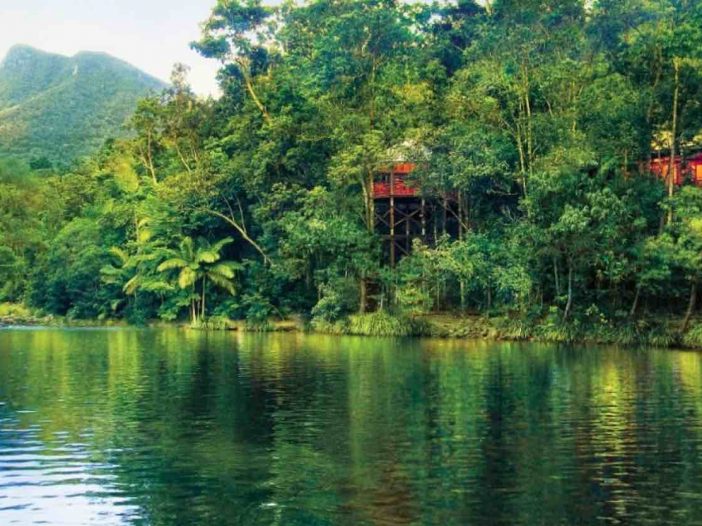
Plans to power Queensland’s World Heritage-listed Daintree region with a solar to hydrogen gas-based microgrid will go ahead, after the federal government awarded Volt Advisory Group the $18.75 million contract for the job.
The contract, officially announced on Monday, is being delivered under the Daintree Microgrid Program, following a grant-funded feasibility study completed under the Regional and Remote Communities Reliability Fund.
The microgrid will incorporate 8MW of solar, 20MWh of battery storage and a 1MW clean hydrogen plant, which will mostly be deployed along existing roadways and previously cleared land to preserve the heritage-listed area.
The microgrid project is the culmination of a decades-long push to improve power supply to residents and businesses in the remote off-grid tourist region – an effort that gained momentum in 2017, when ARENA commissioned a report to identify a range of options.
The ultimate goal has been improve the reliability, security and affordability of electricity supply to households and businesses in the rainforest community, while also removing the need for heavy emitting and costly diesel fuel.
Federal Leichhardt MP Warren Entsch said the project, which would also include the laying of new fibre-optic cables, would significantly improve communications in the region, as well as the supply of energy, while also creating more than 200 jobs.
“Microgrid technology is becoming increasingly cost-effective, creating the opportunity for reliable, low-cost, off-grid power in communities like the Daintree,” Entsch said in a statement on Monday.
“But more importantly, from an environmental aspect, it will remove the need to burn dirty and inefficient diesel in the Daintree, allowing residents to have access to a cleaner, more affordable, more reliable source of energy.”
And while that all sounds unequivocally positive, the project has not been without controversy.
On the one hand, a Daintree Rainforest Power Committee-led campaign has pushed for 30-odd years to bring the area onto a shared network, either connected to the Ergon grid or to a stand-alone microgrid, such as will now be built.
On the other, not everyone in the area – nor the Queensland government, for that matter – agrees that the establishment of a microgrid is the best way to go. Others would prefer to remain power independent, using modern distributed solar and battery storage technology.
In 2019, a Queensland government funded study by KPMG found that the proposed solar, battery and green hydrogen microgrid carried “numerous technical and commercial risks,” and was basically financially unviable without significant upfront and ongoing government support.
The report recommended, instead, the gradual enhancement and replacement of stand-alone solar power-based solutions, as emerging technologies like green hydrogen and battery storage continued to improve and become more readily accessible.
One Step Off The Grid contributor and Daintree local, Dr Hugh Spencer, has also argued that the answer is not in grid-connection, but in staying power independent, using modern distributed solar and battery storage technology.
For Spencer, the divisiveness and politics of the issue has got in the way of all options being properly and carefully considered.
The realities, he wrote in an email to One Step in 2019, remain that there is no existing grid wiring; that all wiring would have to be underground and over a massive area; and not everybody wants be grid connected – and those people feel excluded from community discussions.
“It seems that many of the main pushers are businesses who are not prepared to reduce their energy use, won’t install even notional solar …and several want grid power so they can sell up and move out,” he said.
“The costs of installation of supply lines …will probably greatly exceed generation costs, (and) the market is not assured,” Spencer adds.
“The upfront connection costs will be probably more than anyone are prepared to pay.”
And it’s an emotional decision, says Spencer: “Lots of residents take pride in being energy independent.”
But Volt Advisory Services’ Richard Schoenemann – who worked on the ARENA project alongside the Daintree Power Committee and Phillip Koeghan from Sunverge – said alternative “extensive analysis” had found a full community “power to gas” microgrid was the best option – logistically and economically.
Schoenemann told One Step in late 2019 that the microgrid would have a better cost per unit of energy than the other options assessed, and was also favoured for being optional for residents to connect, while offering those who wanted it a reliable supply and freedom from the responsibility of managing their own power supply.
The environmental impact of the project was also considered to be minimal, with cabling proposed to go under existing infrastructure so that it did not require the disturbance of any of the world heritage listed region.
According to the federal government’s assistant minister for energy and emissions, Tim Wilson, the microgrid – once completed – will displace more than 4 million litres of diesel fuel consumed in the Daintree each year.
“It also presents a significant opportunity to develop key learnings that can be applied as we pursue further microgrid options across Australia,” he said.
Entsch and Wilson said that works on the microgrid project would begin this year, with operations scheduled to begin by 2024.

Sophie is editor of One Step Off The Grid and deputy editor of its sister site, Renew Economy. Sophie has been writing about clean energy for more than a decade.

